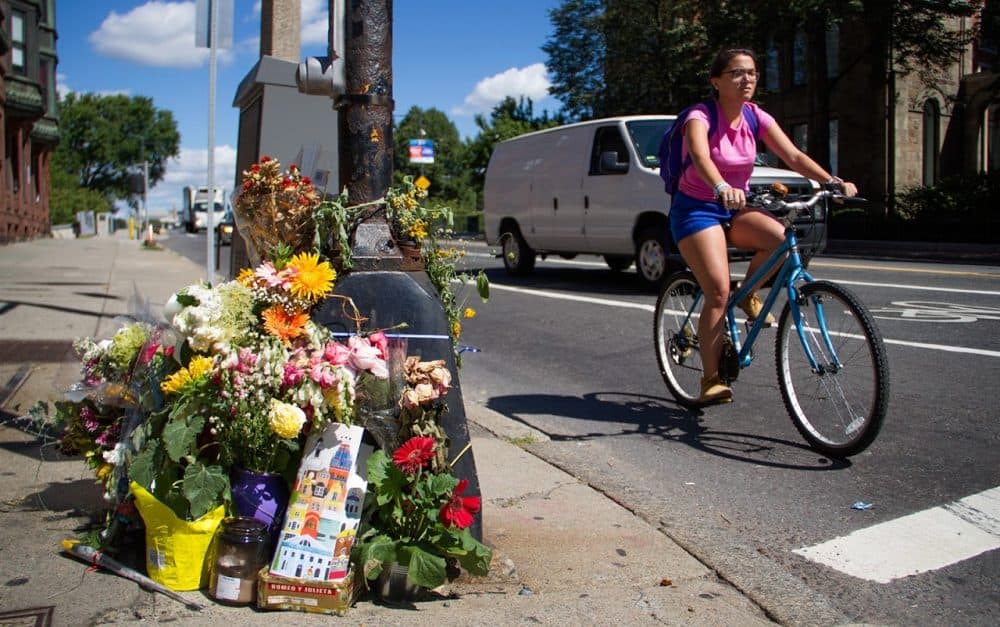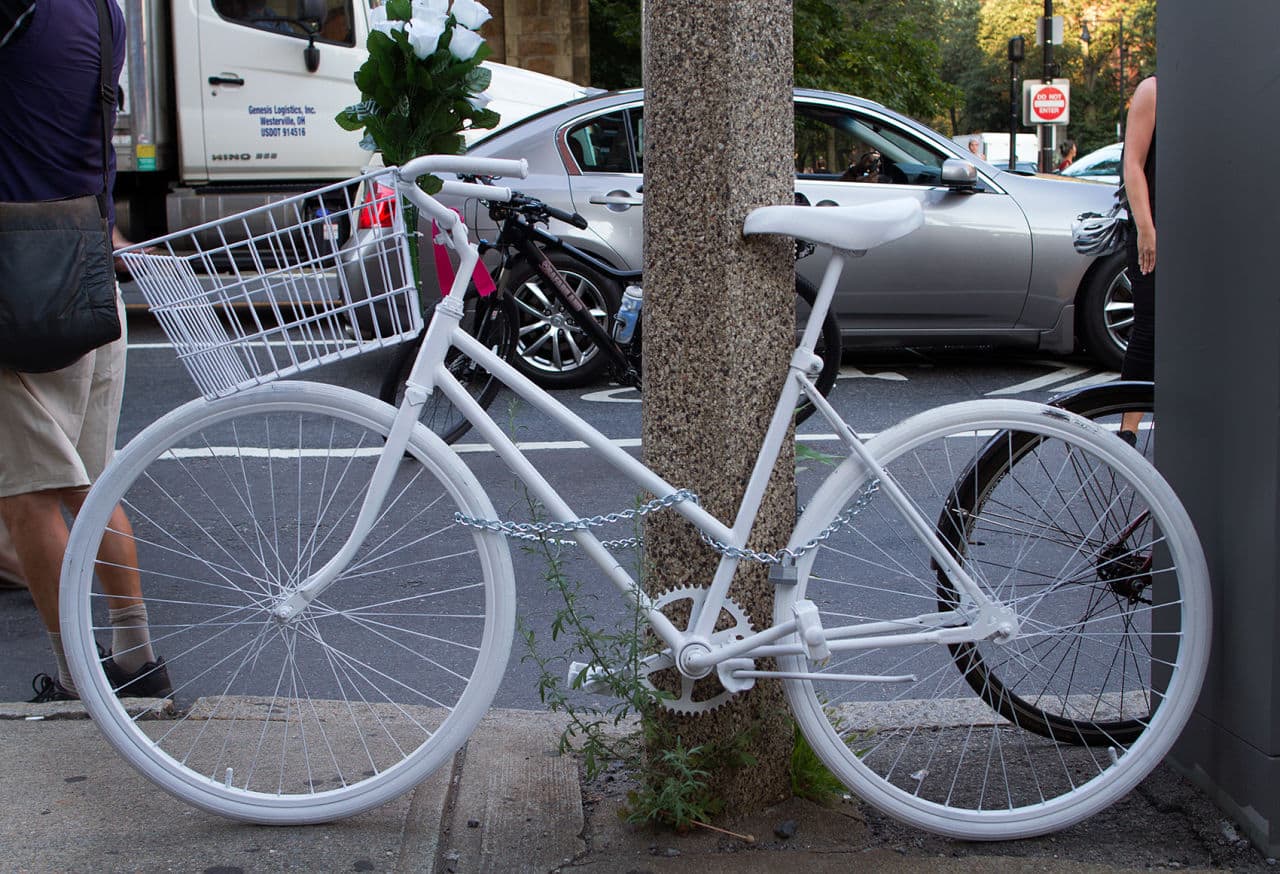Advertisement
Getting Some Perspective On Bike Safety In Boston

The intersection of Massachusetts Avenue and Beacon Street in Boston looks a little different today than it did a month ago. Most of the scenery — from the Crossroads Pub to the brick, copper and wrought iron grandeur of the surrounding Back Bay apartments — is unchanged, save for one addition: a bicycle, painted in white.
The ghost bike, as such memorials are known, marks the place where Anita Kurmann was struck and killed last month when a truck, failing to yield as required by law, turned right across the bike lane.
But even where a solution cannot be engineered in concrete, it can be in people’s minds. Most important is a shift in norms, which begins by recognizing the social advantages of cycling.
Mid the mourning that followed has been much concern. Is cycling in Boston safe? It is an important question, but equally important is perspective. With prominent local voices such as The Boston Globe’s Jeff Jacoby arguing that the region’s streets cannot and should not accommodate cyclists, headlines blaring about mounting death tolls, and cycling advocates warning of a “rash” of fatalities in recent years, it is essential to maintain composure. Cycling remains a relatively safe way to travel in Boston and the nation at large.
According to a Globe report, “At least 13 people have been killed while bicycling on city streets in the last five years.” No doubt this is 13 too many, and local officials deserve credit for their earnest attempts to improve safety while increasing ridership. But the hype surrounding these losses is disproportionate. In 2009 alone, the last year for which the Centers for Disease Control and Prevention collected metro-region data, there were 244 automobile fatalities in the Boston area. Which is the real danger — bikes or cars?
Nationwide, there were 623 cyclist deaths in 2013, compared to nearly 34,000 automobile drivers and passengers, again according to the CDC. Because cars, in the aggregate, cover far more distance than bikes, the fatality rate per mile traveled is likely higher for cyclists, but considering actual patterns of use, there is no question that driving is more hazardous than cycling.

That attention so easily turns to bike safety reflects a number of biases. Some are probably unconscious: the availability heuristic may be at work. This unwieldy term describes our tendency to focus on information most readily at hand. When something seems new or out of place, it becomes cognitively salient. The massive and fairly sudden increase and in urban cycling should attract notice, but that notice may be even greater than warranted because of this innate psychological propensity. Extensive press coverage further heightens the fears attached to bike safety, whereas the perils of driving are so routine that evidence of them often slips by unnoticed by the media and the public — just another in the endless line of wrecks.
Other biases emerge from local conditions. Few relish commuting in Boston, which, by nearly every measure, is one of the most difficult and dangerous American cities to drive in, with and without bikes. But the sense of a war on the roadways is palpable, with recriminations flying in all directions. Hence we get baseless arguments to the effect that our streets are meant only for cars, despite the fact that, legally, bikes have always been welcome, and many streets in the region were actually designed for horse-drawn carriages and later adapted for automobiles. Fixing our roads for the benefit of cyclists is simply the next evolution and perhaps even a corrective. After all, men, not gods, gave the roads to drivers.
That attention so easily turns to bike safety reflects a number of biases.
While cycling under present conditions is safer than driving, it can be made safer still. Infrastructure improvements have already helped and will continue to do so, though only so much can be achieved given limited money, time and technical capacity.
But even where a solution cannot be engineered in concrete, it can be in people’s minds. Most important is a shift in norms, which begins by recognizing the social advantages of cycling. It reduces traffic congestion and alleviates parking scarcity by taking drivers off the road. It improves the physical fitness of riders, reducing the public costs of ill health. It reduces air pollution from combustion emissions, which will not have much effect on large-scale environmental problems such as climate change but can enhance air quality locally. It is the backbone of a thriving economy of manufacturers and repair shops. Scrapping a 30-pound bike is much less wasteful than disposing of a 4,000-pound car. And cycling is an excellent transit option for people who can’t afford the high cost of purchasing, financing, insuring, fueling and maintaining a car.
Normative change will accelerate as the prevalence of cyclists increases, forcing everyone to adjust to new realities and move on. Let’s bolster that increase through reasonable safety measures, not strangle it through unreasoning panic.
